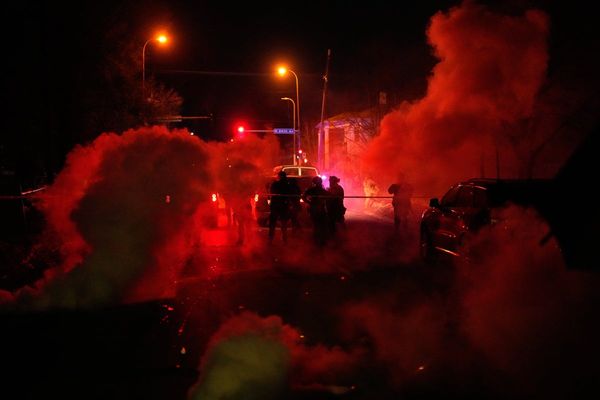
‘Amalia Mesa-Bains: Archaeology of Memory’ marks a significant milestone as the first retrospective dedicated to the pioneering Chicanx installation artist, curator and theorist Amalia Mesa-Bains. Organised by the Berkeley Art Museum and Pacific Film Archive and hosted at El Museo del Barrio in New York, the exhibition provides a rare and long-overdue opportunity to delve into three decades of the artist’s genre-defying artworks, including her emblematic large-scale altar installations, prints, books and codices – many seen together for the first time.
Amalia Mesa-Bains recounts her spellbinding artistic journey

Despite delving into intersectional feminist themes, environmentally-centred spirituality and cultural diversity to challenge the racist and gendered erasures of colonial repression for nearly half a century, Mesa-Bains confesses she never expected to have a retrospective. ‘Very few mainstream museums in this country were interested in my work until quite recently,’ the artist shares with Wallpaper*.


Born in California in 1943 to a Mexican immigrant family, Mesa-Bains grew up in a largely undocumented community. ‘I always knew I was born in the States but was raised as a Mexican, which seemed confusing. Turning to art at a young age and encountering the Chicano movement offered me a real sense of belonging,’ she reflects. Beginning her artistic exploration within the intimate sphere of family and community, alongside fellow Latinos and artists of colour, led Mesa-Bains to research Mexican ancestral traditions during the mid-1970s.


Mesa-Bains’ extensive exploration culminates in her large-scale reinterpretations of home altars and ofrendas (offerings to the deceased), which serve as alternative sacred spaces for Mexican and Latino communities diverging from traditional church settings and a way for women to extend spiritual power in the home – as seen in The Library of Sor Juana Inés de la Cruz (1994/2021). Mesa-Bains emphasises how both forms of expression also contribute to the cultural reclamation of Chicanx communities: ‘The recognition of the dead as an ongoing part of one’s life and the celebration of life as a joyous tradition offers an alternative to the Anglo-American approach to mourning and death.’
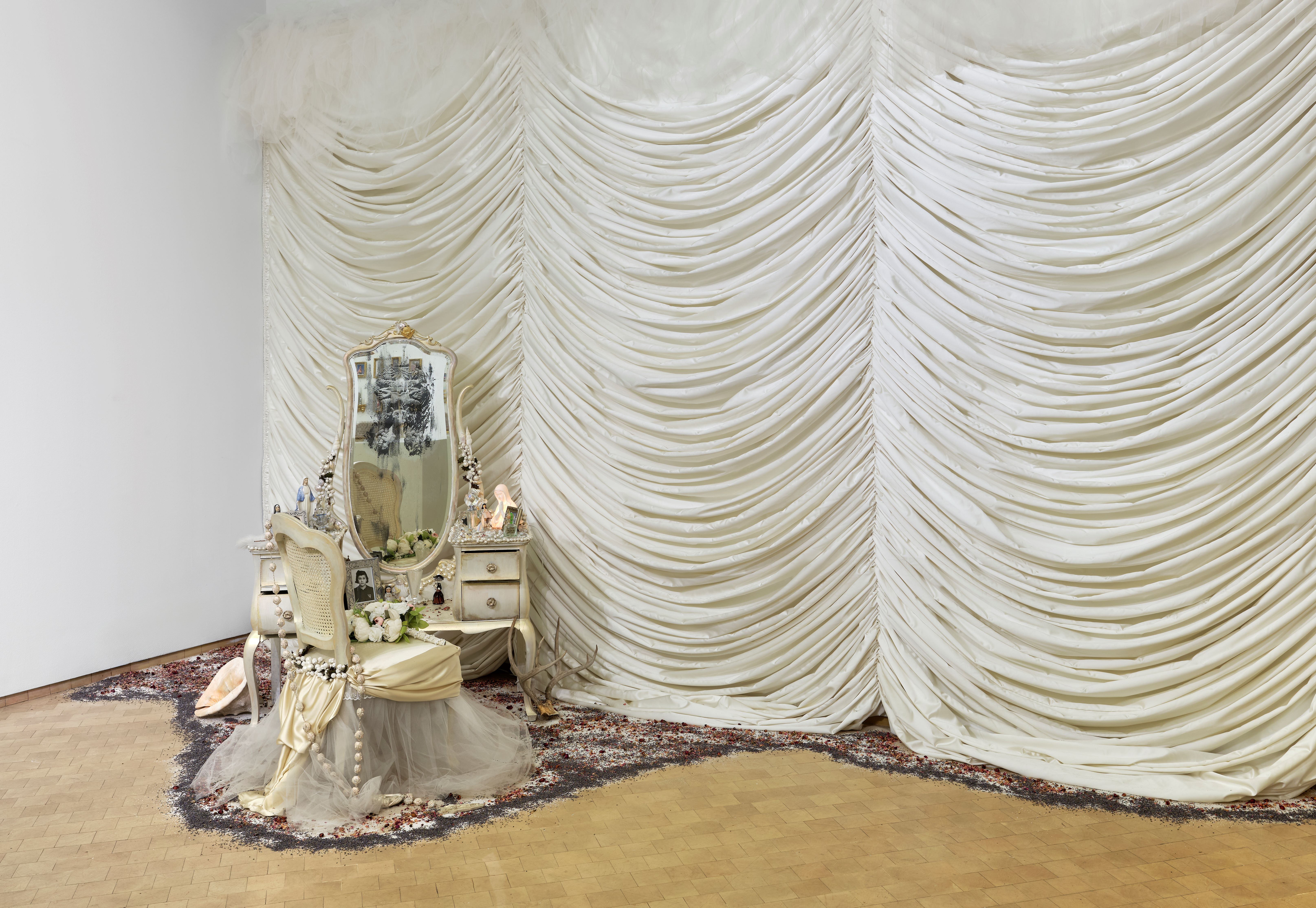
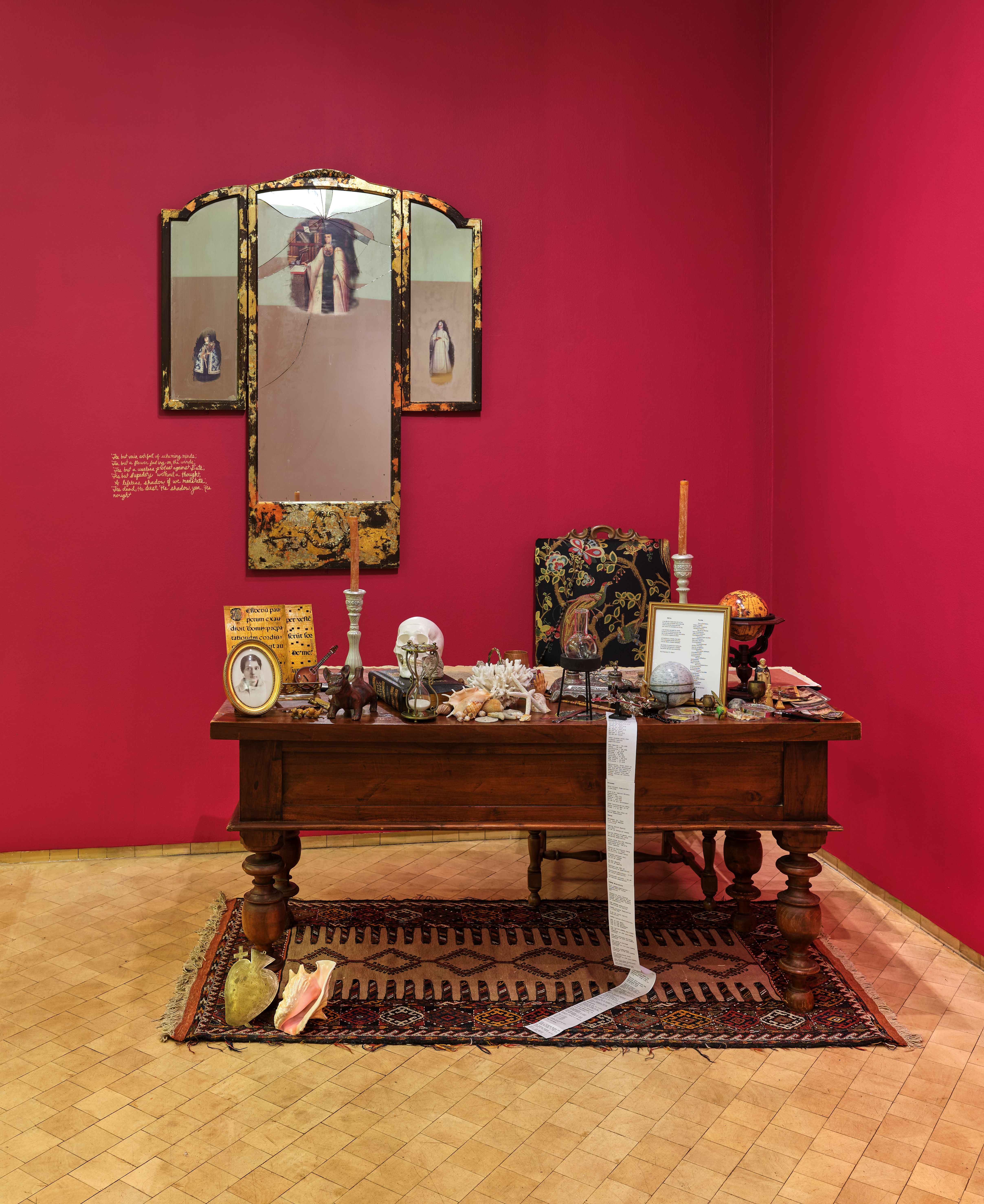
In pieces like Queen of the Waters, Mother of the Land of the Dead (1992), which pays homage to the Virgin of Guadalupe and Tonantzin and is showcased in the exhibition, Mesa-Bains draws inspiration from women across personal, historical and religious realms, portraying them as embodiments of spiritual and intellectual authority. Reflecting on this, she remarks, ‘Women of colour need to work together to liberate ourselves. Class and race have always intersected my life: I watched my mother clean houses of naval families and learned to enter their homes by side or back doors.’
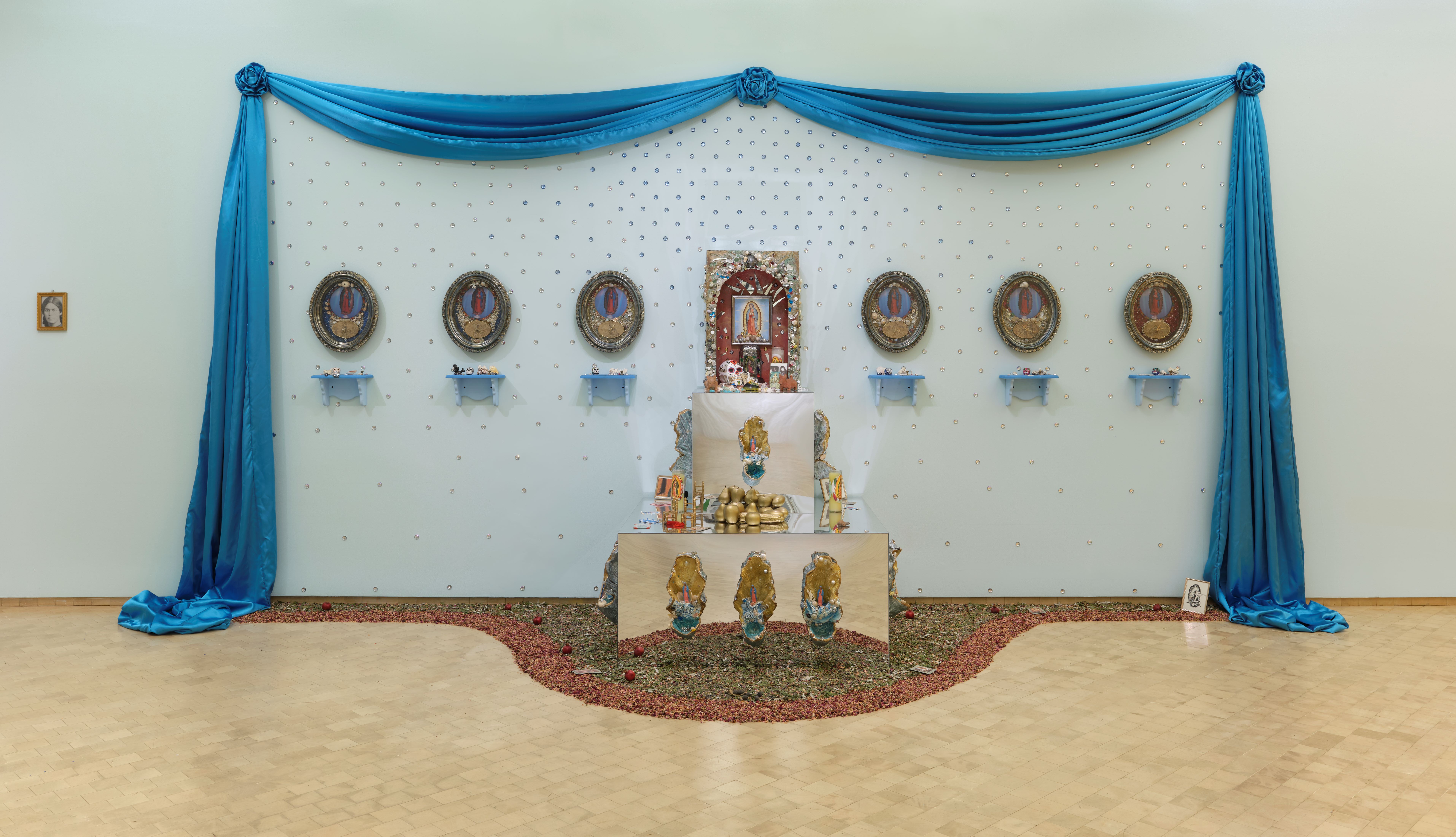

The 40 artworks featured in ‘Amalia Mesa-Bains: Archaeology of Memory’ offer a comprehensive overview of the artist’s evolution, showcasing her enduring commitment to social justice issues. The exhibition’s title nods to Mesa-Bains’ conviction that memory is a powerful tool for challenging the legacies of colonisation. Mirrors strategically placed throughout the exhibition, such as in Circle of Ancestors (1995), dissolve the divide between the viewer and the artwork, symbolising luminosity, reflection, and identity. Mesa-Bains notes, ‘Many visitors share images of themselves reflected in the mirrors, sparking discussions about the complexities of their own existence.’
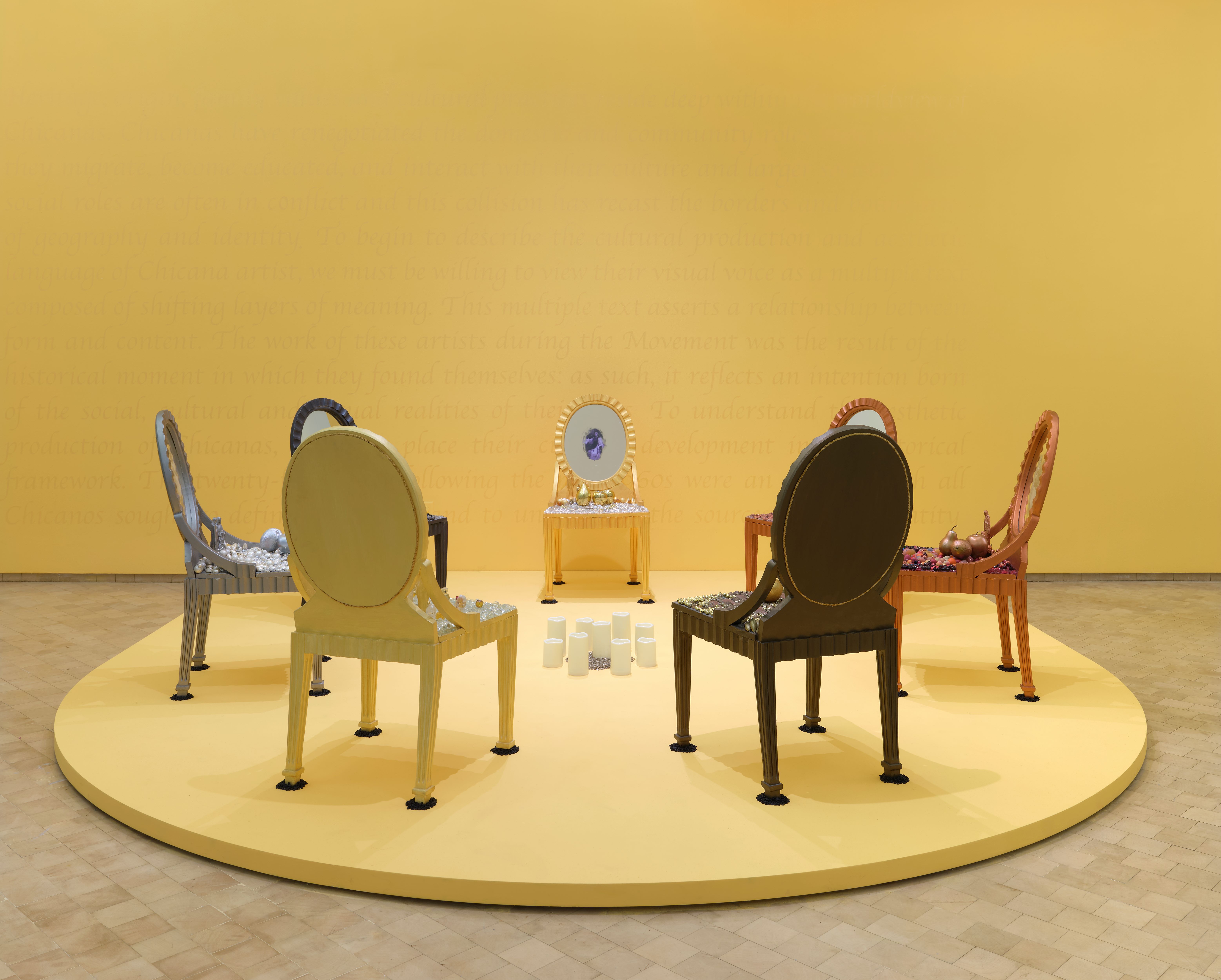
‘Archaeology of Memory’ represents the first occasion where the Mesa-Bains’ Venus Envy (1993) series is showcased entirely, consolidating four chapters previously exhibited across various institutional venues. This body of work stands as a bold reinterpretation of the Freudian notion of Penis Envy (1908), reclaiming agency over women’s psychosexual development – an idea Mesa-Bains encountered during her training as a psychologist. Intriguingly, the genesis of Venus Envy coincided with Mesa-Bains’ battle with heart and lung disease, a health crisis that starkly confronted her mortality. This experience prompted her to refocus her artistic endeavours towards a more introspective exploration of themes surrounding the body, spirit and culture, realising the urgency of sharing her own narrative.


At 80 years old, Mesa-Bains has recently found herself invigorated by the landscape surrounding her home and the parallels between ageing and nature’s cyclical rhythms. The artist reveals her recent musings on the concept of a tree library, a collection of books, plant and tree specimens, and archival prints concerning healing practices. ‘I feel as though this world of natural growth is an extension of my lifelong concern with healing.’ The artist finishes the interview by reciting a line by philosopher Nezahualcoyotl: ‘We are like the spring grass / We bud, blossom, dry up and blow away / We were never meant to be on this earth forever.’

‘Amalia Mesa-Bains: Archaeology of Memory’ is on view at El Museo del Barrio in New York until 11 August 2024, elmuseo.org

